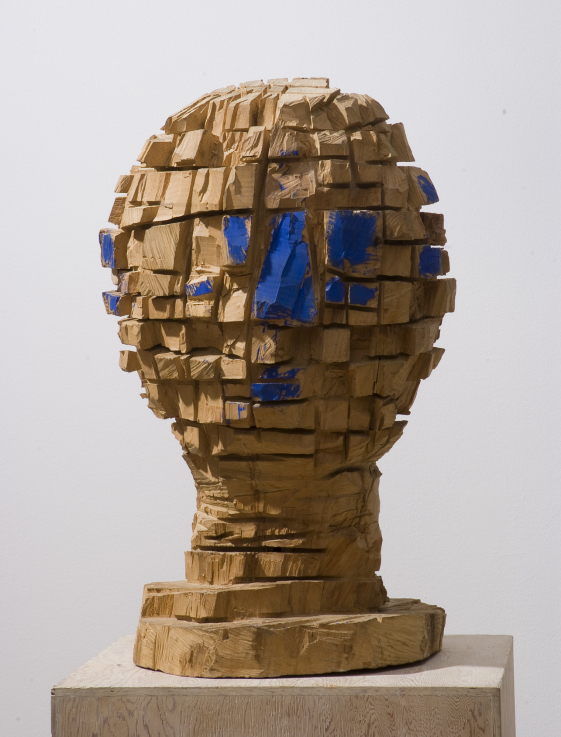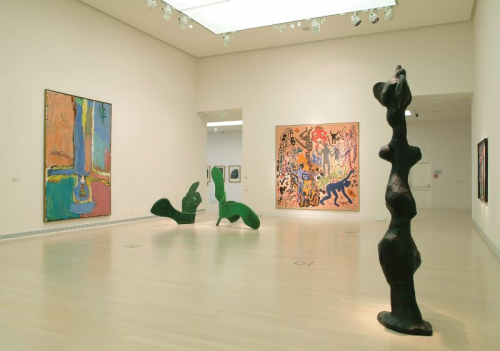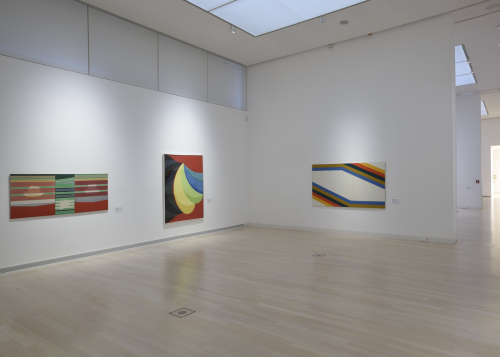Solid wood, from which Baselitz makes his sculptures, was a less frequently used raw-material in the art world during the last two decades of the 20th century. Carving the wood was synonymous for him with overcoming the resistance of the material, or as he himself put it, “I did not want to head where the wood wanted me to go, but in the exact opposite direction.” He worked the surface with saw and chisel, and payed no apparent attention to the direction of the wood grain. Carving a sculpture is a rather aggressive act: the tools the sculptor uses for the process leave wound-like marks on the material. The G-head too looks as if someone chopped it up both horizontally and vertically in a terrible fit of anger. G-head is Baselitz’s conscious break with the Egyptian-Greek-Roman roots of European sculpture. The Old German sculptural finds discovered in East-Holstein had a greater influence on his work, as did the engravings of Karl Brendel, a schizophrenic artist. Distancing himself from the European sculptural tradition, Baselitz reassessed the concept of the “masterpiece” as well. “A masterpiece is no longer (or not at all) the most perfect work of art that best follows artistic traditions, but the most peculiar one, or in other words the extraordinary…”


